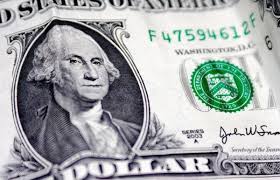Dollar hits 3-month low to start 2018

The U.S. dollar started 2018 on the wrong foot, hitting its lowest point since mid-September.
In fact, the greenback lost value for almost all of 2017. It plummeted despite factors that typically drive up the dollar, like the passage of tax cuts and an overall healthy U.S. economy.
‘
But compared to the world’s most traded currencies, the dollar fell nearly 10% last year. It’s down 2% since December 15, according to the ICE dollar index.
Political turmoil stemming from the 2016 election, better global growth and uncertainty over whether the tax bill would even happen pushed the dollar south to start last year.
But more recently, experts say dimmed expectations for the tax bill’s impact on the U.S. economy, along with international factors, have caused the dollar to continue drifting down.
Related: Workers see fewer chances of promotion and raises
“People are accepting the idea that tax cuts are boosting near-term growth but won’t change the long-term growth potential of the U.S. economy,” says Marc Chandler, global head of currency strategy at Brown Brothers Harriman, a private bank.
The tax bill cut corporate taxes significantly and lowered taxes for many individuals, especially wealthy Americans. However, CEOs have said they don’t plan to go on a hiring or spending spree because of the tax cuts. And economists often point out that rich people tend to save, not spend, the extra cash they get from lower taxes.
A broader global trend also hit the dollar in 2017. For years after the financial crisis, the United States was one of the lone bright spots in the global economy with robust job growth and consistent, albeit slow, economic growth.
With the U.S. as the main engine for the global recovery, the dollar strengthened nearly 13% in 2014, 9% in 2015 and another 3.5% in 2016, according to the ICE index.
Related: 2017 was the year of the red-hot job market
Now that other regions are picking up the slack, other currencies are gaining steam again, pushing down the dollar after its historic, multi-year rally. China’s growth has stabilized. Europe’ economy is showing strength. Latin America, particularly Brazil and Argentina, is recovering after hitting rock bottom in prior years.
Global growth last year was likely at its highest point since 2007 (we still need to see the fourth quarter economic growth figures which come out in about a month).
As a result of better growth, central banks, particularly in the U.K. and Europe are catching up to the U.S.’s Fed by raising rates. For years, the Fed was bringing U.S. interest rates up while others were keep theirs flat or negative. That divergence also pushed up the dollar. Now monetary policy is converging — an overall healthy sign — which also hits the dollar’s value.
Related: U.S. consumer confidence remains near 17-year high
As for 2018, experts say the dollar could keep going down even though the U.S. economy is in good shape.
“When you look from a broader [perspective] — global growth, global interest rates — you can see a little further weakness from the dollar,” says Ihab Salib, head of international fixed income at Federated Investors.
The tax bill could have an additional negative impact on the dollar. If middle class Americans decide to spend the money they received from tax savings, they’ll almost certainly buy products — like iPhones — made overseas. If that trend boosts imports more than exports, the dollar could go down some more.
“Where is it going to be spent? It’s going to be spent buying things from predominantly outside the United states,” adds Salib. “You could potentially see a little more weakness in the first six months or so.”
